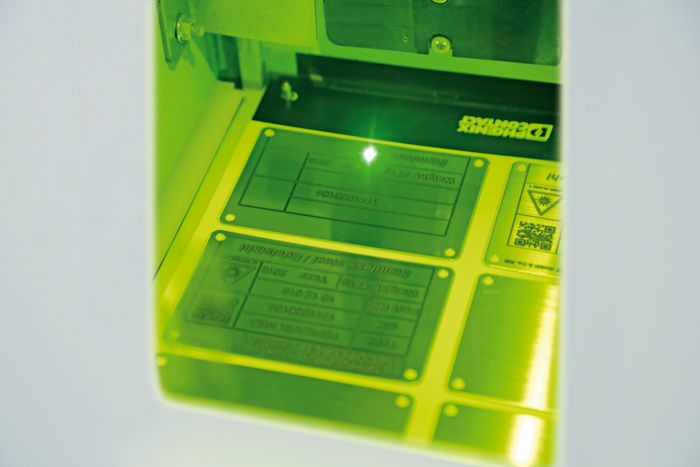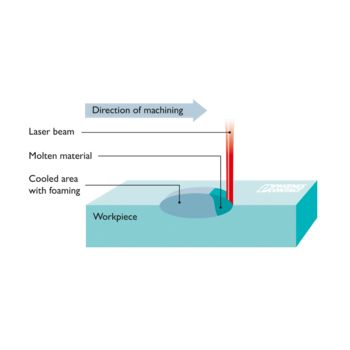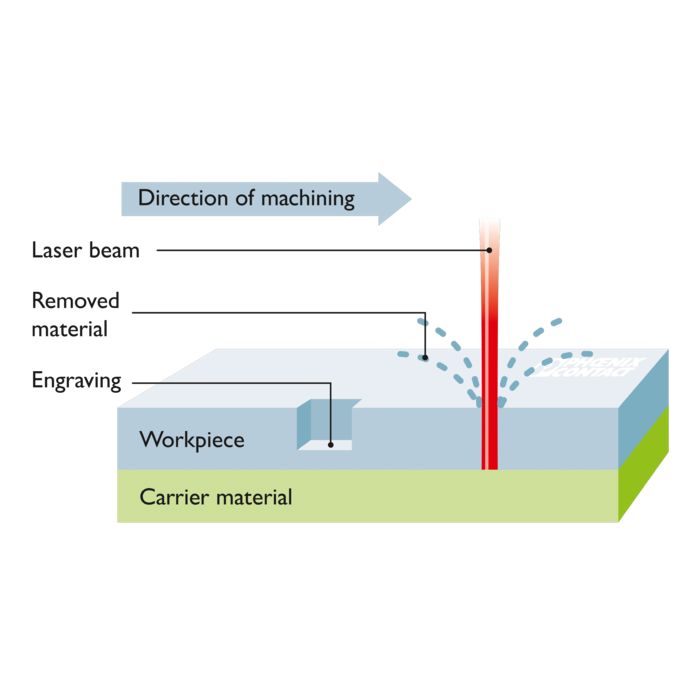
Laser engraving is based on powerful laser pulses. The power density of the laser pulses is so high that the material to be processed melts and vaporizes. When engraving solid material, the laser beam hits the surface of the solid material, removes some of the material to create an indentation – the engraving.


















